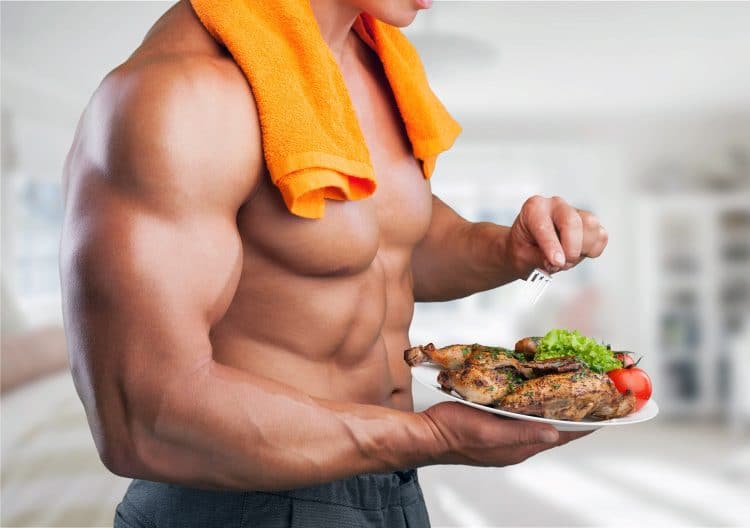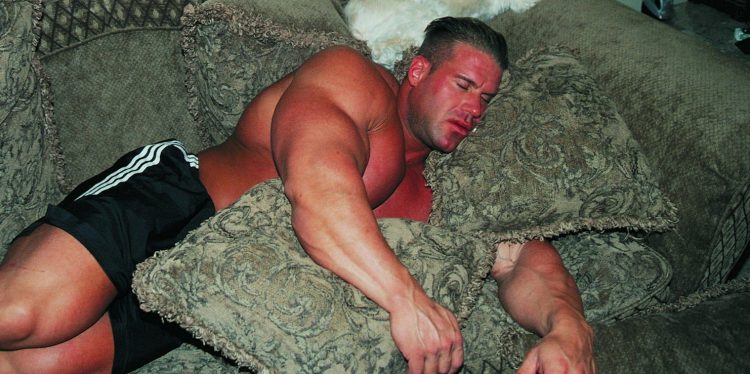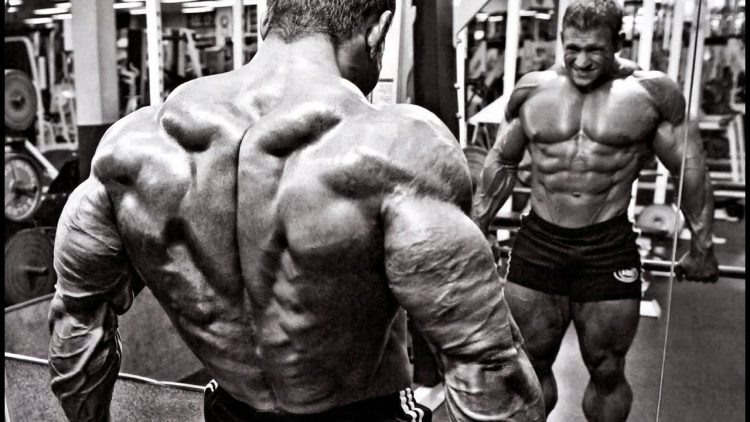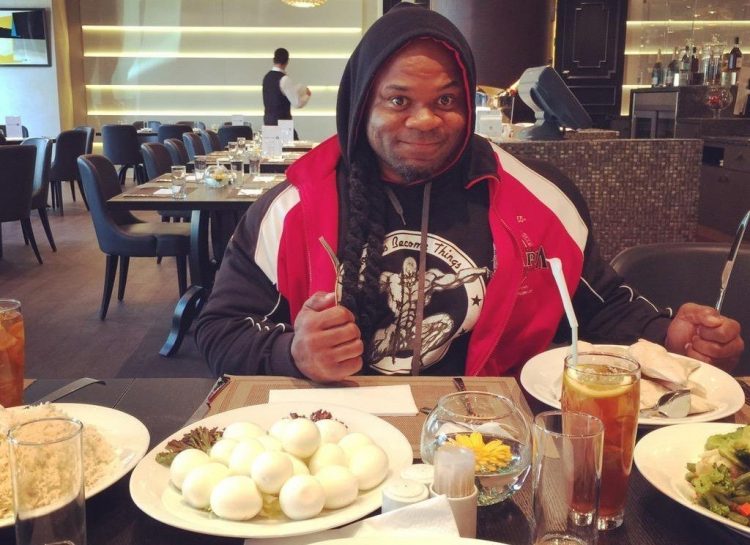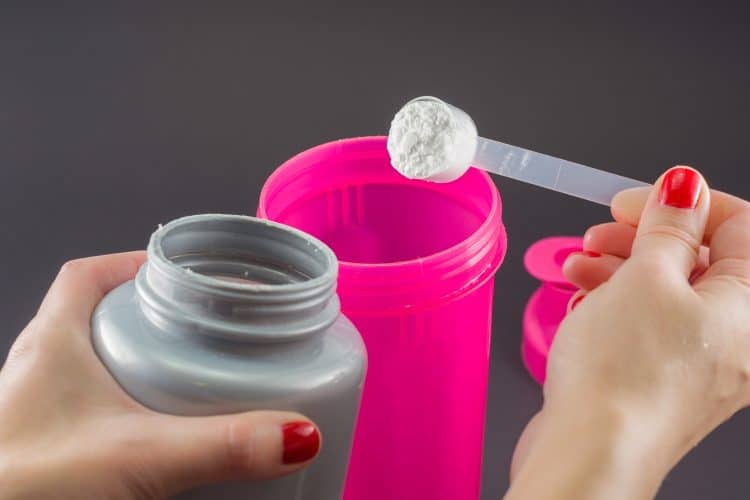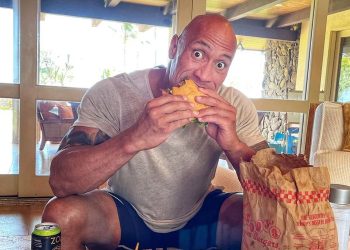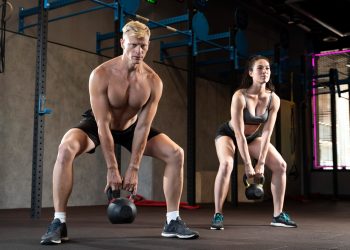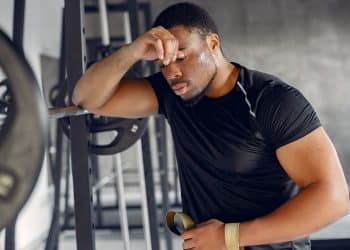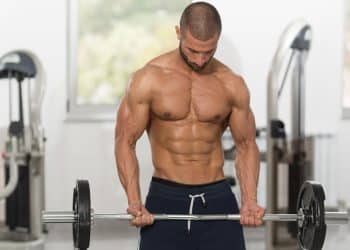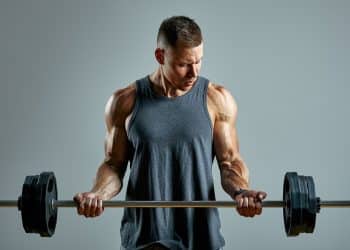Building muscle mass is one of the top physique improvement goals among gym goers. Additional muscle mass will increase size, definition and lean muscle to your entire physique. While this is largely desired, many gym enthusiasts struggle with building muscle mass. This is commonly known as hard gainers. Hard gainers typically want healthy, quality weight gain.
To gain weight is quite easy. Building muscle mass is the real challenge. Unfortunately, there is no one size fits all solution. However, there are general guidelines that if followed should lead towards the right path. Whether you are working towards a bodybuilding competition or simply want to finally put meat on those bones, here is the
How to Build Muscle Mass:
1. EAT BIG – Consume more calories than burned
This advice may sound obvious. However, many times hard gainers are simply unaware of how much calories they are consuming compared to how much they are burning.
To figure how many calories are needed to gain weight, add between 250-500 kcals to either the Mifflin-St Jeor, Cunningham, or the Harris-Benedict equation times activity factor. These equations are used to determine the individual’s resting metabolic rate:
Mifflin-St Jeor
- For Men: 10 x weight (kg) + 6.25 x height (cm) – 5 x Age + 5
- For Women: 10 x weight (kg) + 6.25 x height (cm) – 5 x Age – 161
Cunningham
- 500 + (22 x LBM(kg))
Harris–Benedict
- For Men: 88.4 + 13.4 x weight (kg) + 4.8 x height (cm) – 5.68 x age
- For Women: 447.6 + 9.25 x weight (kg) + 3.10 x height (cm) – 4.33 x age
The Mifflin-St Jeor equation is the most used and most accurate way to estimate daily caloric needs for any age, and gender. However, for athletes, research has shown that the Cunningham equation is the most accurate formula for female athletes, while the Harris-Benedict equation is the most accurate formula for male athletes3.
Since not every individual is the same, some equations might not be as accurate as others for the individual’s actual needs. To determine which method to use, test out all equations and use the formula that provides the most kcals needed. This will increase the probability that enough (or more than enough) calories are being consumed.
Example
John Wick, Male, 21, 5ft9in (175.26cm), 135lbs (61.24kg), 7% BF (LBM 9.45lbs (4.3kg)), lightly active (exercise/sports 1-3 days/week)
-
- Mifflin-St Jeor – 10 x 61.24 + 6.25 x 175.26 – 5 x 21 + 5 = 1,607.78 kcals
- Cunningham – 500 + (22 x 61.24) = 1,847.28 kcals
- Harris-Benedict – 88.4 + 13.4 x 61.24 + 4.8 x 175.26 – 5.68 x 21=1,630.98kcals
1,847.28 kcals x 1.375 (activity factor) = 2,540.01 kcals/day needed to maintain weight
2,540.01 + (250 or 500) = Between 2,790.01 and 3,040.01 kcals/day needed to gain weight
It is important to adjust accordingly if you find that you are gaining weight too fast. Over-consumption of calories can cause unwanted fat gain.
Instead of focusing on long, boring math equations every time you need to determine your caloric needs, using an online BMI calculator would save you time while ensuring accuracy. Our Weight Gain Calculator allows you to simply plug in the required information (age, weight, height, gender, etc) and it would automatically tell you how much you need to consume to gain weight based on your goals and individual needs.
Related: Calculate Your Total Daily Energy Expenditure
2. LIFT BIG – Exercise at least 3x/week for 1 hour

Eating is only one part of the equation. After you determine how much you need to eat to reach a caloric surplus, you want those added calories to turn into muscle. This requires lifting. A good routine would be lifting 3 times a week, moderately-heavy for 1 hour. If working out is a challenge, below you will find a full week sample workout to get started.
While your top priority is building mass, you want to ensure you are in a caloric surplus even during workouts days. Caloric surplus is simply consuming more calories in a day than burned. Since working out burns calories, you will want to counteract this deficit by consuming more total calories on workout days.
To determine this, we would add the calories burned during a workout (using the MET factor) to the client’s daily caloric needs.
Example
John Wick, 135lbs (61.24kg), lifts weights at a moderate intensity, 8-12 reps, 3x/week for 1 hour
1MET x 3.5 x weight(kg)/200 = kcals/min
3.5 x 3.5 x 61.24/200 = 3.75
3.75 x 60 mins = 225.06 kcals burned during exercise
225.06 + (2,790.01 or 3,040.01) = Between 3,015.07 and 3,265.07 kcals/day needed on workout days
3. SLEEP BIG – Make sure to get adequate rest
Yes, staying up later allows more time to eat. But it also places unnecessary stress on the body, not allowing the muscles to recover from all the pain and gain inflicted at the church of iron. I’m no expert on sleep, but long blinks won’t cut it. The great Arnold recommends a minimum and maximum of six hours.
According to experts, six hours is not enough for the average hard gainer. Instead, experts recommend seven to eight hours and thirty minutes of quality sleep4. Experiment with the number of hours needed to feel refreshed and ready to tackle the day. Try starting with eight hours (no more than eight) of sleep and slowly decrease hours by thirty minutes.
Now that you know the 3 major rules of building mass, time to expand on creating an effective workout plan.
The Muscle Mass Workout Plan
There are many ways of creating a great workout plan. It is vital to find what works best for you. Be sure to take your time instead of jumping straight into a difficult routine that will likely lead to burnout.
This muscle mass workout plan is divided into three gym days: Chest & Back, Shoulders & Arms, and Legs & Abs.
This workout program will begin with high reps, moderate weight. Each week, as the reps and sets decrease, you should be increasing the weight/resistance accordingly.
Weight should be light enough that you can complete every rep and set, but heavy enough that you can’t perform additional reps. If you find that the weight is too light or too heavy, simply adjust the resistance for the next set. No need to redo sets, as the goal is to maintain a workout habit that you’ll continue far beyond 4 weeks.
You may also super-set for time convenience, as well as to provide a slight increase in intensity. A super-set is the act of performing one set of two workouts without a break in between. If the workout plan or an exercise is too difficult, scale or adjust accordingly to your personal needs.
For example, instead of super setting, take a 30-60 second break between each set. You may also replace exercises with an easier or modified version if it works out the same muscle group (i.e., replacing bench press with knee push-ups).
Calendar
| Week | Sunday | Monday | Tuesday | Wednesday | Thursday | Friday | Saturday |
| 1 | Rest | Full Body A | Rest | Full Body B | Rest | Full Body C | Rest |
| 2 | Rest | Full Body A | Rest | Full Body B | Rest | Full Body C | Rest |
| 3 | Rest | Full Body A | Rest | Full Body B | Rest | Full Body C | Rest |
| 4 | Rest | Full Body A | Rest | Full Body B | Rest | Full Body C | Rest |
Related: How to Write A Bodybuilding Program
Week 1
|
Full Body A |
|||
| Body Part | Exercise | Sets | Reps |
| Chest | Flat Bench Press | 2 | 12-20 |
| Shoulders | Overhead Press | 2 | 12-20 |
| Triceps | Tricep Pushdown | 2 | 12-20 |
| Back | Deadlift | 2 | 12-20 |
| Biceps | Alt Dumbbell Curls | 2 | 12-20 |
| Quads/Hamstrings | Barbell Squats | 2 | 12-20 |
| Calf | Seated Calf Raise | 2 | 12-20 |
| Core | Plank | 2 | 1 min |
|
Full Body B |
|||
| Body Part | Exercise | Sets | Reps |
| Chest | Incline Bench Press | 2 | 12-20 |
| Shoulders | Side Lat Raise | 2 | 12-20 |
| Triceps | Tricep Extension | 2 | 12-20 |
| Back | Lat Pulldown | 2 | 12-20 |
| Biceps | Hammer Curls | 2 | 12-20 |
| Glutes | Walking Lunges | 2 | 12-20 |
| Calf | Standing Calf Raise | 2 | 12-20 |
| Core | Crunch | 2 | 1 min |
|
Full Body C |
|||
| Body Part | Exercise | Sets | Reps |
| Chest | Cable Fly | 2 | 12-20 |
| Shoulders | Seated Arnold Press | 2 | 12-20 |
| Triceps | Dips | 2 | 12-20 |
| Back | One-Arm Dumbbell Row | 2 | 12-20 |
| Biceps | Alt Dumbbell Curl | 2 | 12-20 |
| Glutes | Single-Leg Split Squat | 2 | 12-20 |
| Calf | Seated Calf Raise | 2 | 12-20 |
| Core | Captain’s Chair Leg Raise | 2 | 1 min |
Week 2
|
Full Body A |
|||
| Body Part | Exercise | Sets | Reps |
| Chest | Flat Bench Press | 3 | 8-12 |
| Shoulders | Overhead Press | 3 | 8-12 |
| Triceps | Tricep Pushdown | 3 | 8-12 |
| Back | Deadlift | 3 | 8-12 |
| Biceps | Alt Dumbbell Curls | 3 | 8-12 |
| Quads/Hamstrings | Barbell Squats | 3 | 8-12 |
| Calf | Seated Calf Raise | 3 | 8-12 |
|
Full Body B |
|||
| Body Part | Exercise | Sets | Reps |
| Chest | Incline Bench Press | 3 | 8-12 |
| Shoulders | Side Lat Raise | 3 | 8-12 |
| Triceps | Tricep Extension | 3 | 8-12 |
| Back | Lat Pulldown | 3 | 8-12 |
| Biceps | Hammer Curls | 3 | 8-12 |
| Glutes | Walking Lunges | 3 | 8-12 |
| Calf | Standing Calf Raise | 3 | 8-12 |
| Core | Crunch | 3 | 1 min |
|
Full Body C |
|||
| Body Part | Exercise | Sets | Reps |
| Chest | Cable Fly | 3 | 8-12 |
| Shoulders | Seated Arnold Press | 3 | 8-12 |
| Triceps | Dips | 3 | 8-12 |
| Back | One-Arm Dumbbell Row | 3 | 8-12 |
| Biceps | Alt Dumbbell Curl | 3 | 8-12 |
| Glutes | Single-Leg Split Squat | 3 | 8-12 |
| Calf | Seated Calf Raise | 3 | 8-12 |
| Core | Captain’s Chair Leg Raise | 3 | 1 min |
Week 3
|
Full Body A |
|||
| Body Part | Exercise | Sets | Reps |
| Chest | Flat Bench Press | 4 | 6-10 |
| Shoulders | Overhead Press | 4 | 6-10 |
| Triceps | Tricep Pushdown | 4 | 6-10 |
| Back | Deadlift | 4 | 6-10 |
| Biceps | Alt Dumbell Curls | 4 | 6-10 |
| Quads/Hamstrings | Barbell Squats | 4 | 6-10 |
| Calf | Seated Calf Raise | 4 | 6-10 |
| Core | Plank | 4 | 1 min |
|
Full Body B |
|||
| Body Part | Exercise | Sets | Reps |
| Chest | Incline Bench Press | 4 | 6-10 |
| Shoulders | Side Lat Raise | 4 | 6-10 |
| Triceps | Tricep Extension | 4 | 6-10 |
| Back | Lat Pulldown | 4 | 6-10 |
| Biceps | Hammer Curls | 4 | 6-10 |
| Glutes | Walking Lunges | 4 | 6-10 |
| Calf | Standing Calf Raise | 4 | 6-10 |
| Core | Crunch | 4 | 1 min |
|
Full Body C |
|||
| Body Part | Exercise | Sets | Reps |
| Chest | Cable Fly | 4 | 6-10 |
| Shoulders | Seated Arnold Press | 4 | 6-10 |
| Triceps | Dips | 4 | 6-10 |
| Back | One-Arm Dumbbell Row | 4 | 6-10 |
| Biceps | Alt Dumbbell Curl | 4 | 6-10 |
| Glutes | Single-Leg Split Squat | 4 | 6-10 |
| Calf | Seated Calf Raise | 4 | 6-10 |
| Core | Captain’s Chair Leg Raise | 4 | 1 min |
Week 4
|
Full Body A |
|||
| Body Part | Exercise | Sets | Reps |
| Chest | Flat Bench Press | 5 | 3-6 |
| Shoulders | Overhead Press | 5 | 3-6 |
| Triceps | Tricep Pushdown | 5 | 3-6 |
| Back | Deadlift | 5 | 3-6 |
| Biceps | Alt Dumbell Curls | 5 | 3-6 |
| Quads/Hamstrings | Barbell Squats | 5 | 3-6 |
| Calf | Seated Calf Raise | 5 | 3-6 |
| Core | Plank | 5 | 1 min |
|
Full Body B |
|||
| Body Part | Exercise | Sets | Reps |
| Chest | Incline Bench Press | 5 | 3-6 |
| Shoulders | Side Lat Raise | 5 | 3-6 |
| Triceps | Tricep Extension | 5 | 3-6 |
| Back | Lat Pulldown | 5 | 3-6 |
| Biceps | Hammer Curls | 5 | 3-6 |
| Glutes | Walking Lunges | 5 | 3-6 |
| Calf | Standing Calf Raise | 5 | 3-6 |
| Core | Crunch | 5 | 1 min |
|
Full Body C |
|||
| Body Part | Exercise | Sets | Reps |
| Chest | Cable Fly | 5 | 3-6 |
| Shoulders | Seated Arnold Press | 5 | 3-6 |
| Triceps | Dips | 5 | 3-6 |
| Back | One-Arm Dumbbell Row | 5 | 3-6 |
| Biceps | Alt Dumbbell Curl | 5 | 3-6 |
| Glutes | Single-Leg Split Squat | 5 | 3-6 |
| Calf | Seated Calf Raise | 5 | 3-6 |
| Core | Captain’s Chair Leg Raise | 5 | 1 min |
Rule 1: NEVER SKIP LEGS!
Think of the legs as the foundation for the rest of the body. Like levels to a building, there needs to be a strong first floor to support the remaining floors. Muscle mass can only grow so much on a weak foundation.
The importance of rest days
It is vital that you get adequate rest in between workout days. These are known as rest days. Lion’s sleep for 20 hours a day and accomplish more in 4 hours than people do with 16 hours. For the best recovery, rest in between each workout day.
While this day is vital to recover from and prepare for the various days of hell, it is important to not completely indulge in this day. Being a completely lazy person is not also unhealthy, but also counterproductive to building quality muscle mass. So, while you rest, you shall also reflect. In a workout journal, keep track of your progress and consider the following questions – What went wrong? What went right? How can we improve?
At the same time, we must learn to indulge in the days in which we can be worry-free. Kick up our feet, watch a movie, read a book, and enjoy the fun things in life.
The Muscle Mass Meal Plan
Okay! Let’s talk about nutrition! Keep in mind that much of nutrition varies from person to person. However, very few can effectively build muscle mass while ignoring nutrition. But what does one eat to build muscle mass? We already determined our caloric needs.
We already determined a reasonable workout routine. But what about dieting? Are there any bad foods? Should we be eating those low-calorie veggies? Our Food Database is a great resource for determining nutritional needs.
According to ChooseMyPlate6 the following would be needed to reach 3000 Kcals a day:
- Fruit – 2 1/2 Cups
- Vegetables – 4 Cups
- Grains – 10 ounces
- Protein – 7 ounces
- Diary – 3 cups
Tip: Find Your Daily Protein Intake
This does not include cooking oils, fats, or other additions that may increase caloric intake. Use this guideline to ensure you are consuming enough of each food group. You may also supplement with making your own shakes using a quality whey and natural ingredients; such as bananas and peanut butter.
To help with determining exactly what items to stock your kitchen with, the following is a weekly grocery list of the essentials.
Grocery List:
- Fresh Spinach (2-3 Large Bags)
- 4 bags of frozen vegetables (broccoli, green beans, mixed veggies, etc.)
- 4 bags of Frozen fruit (mixed berries, strawberries, etc.)
- 7 Bananas
- 7 Sweet potatoes
- Oatmeal
- Brown Rice
- Quinoa
- High-fiber cereal (I like Raisin Bran)
- 1 Jar pesto (or homemade)
- Green tea
- Extra Virgin Olive Oil
- 1 pound fish (salmon, tilapia, etc.)
- 2 pounds ground beef/turkey
- 3 pounds of chicken (any type)
- 1 pound ground chicken sausage
- 1 dozen eggs
- 1 Gal 1% Milk
- Almond or Peanut Butter (Natural, Unsweetened)
- Honey
- 2 large containers of plain Low-fat yogurt
- Whey protein powder
- Protein Bar
- Mass-Gainer
- Herbs & spices (onion, garlic, peppers, lemon, parsley, etc.)
Related: The Greatest Healthy Grocery List For Improving Your Health
This is what an example day would look like:
Workout Day
6:00 am – Pre-Workout: Protein Bar 150 kcal
6:30 am – Workout: Water & Gainz
8:00 am – Breakfast: Smoothie (12 oz 1% Milk, 1 banana, 1/2 cup strawberries, 1 cup Spinach, 1 Tbsp Almond Butter, 1/2 tbsp honey, 1 scoop whey protein powder) + Oatmeal (Oatmeal, 1/2 tbsp brown sugar) 783.6 kcal
Noon – Lunch: 1 1/2 cup broccoli, 1 cup brown rice, 4 ounces chicken breast, 1 1/2 tbsp olive oil 664 kcal
5:00 pm – Afternoon Snack: Mass-Gainer + 12 oz 1% Milk, 1 cup mixed berries 897.9 kcal
7:30 pm – Dinner: 1 1/2 cup green beans, 1 cup quinoa, 3 ounces Salmon, 1 1/2 tbsp olive oil 612.5 kcal
Total – 3108 kcal*
*Estimated calories based on Cronometer5 nutrition app. Calories may vary based on the app used and/or product recorded (ex. frozen berries vs fresh berries).
Taking the time to plan exactly what I am going to eat made me more determined to stick to this plan. I am excited to share different recipe ideas I come with each week utilizing the items on the list.
Additional Tips for Building Muscle Mass
1. Eat often
Instead of the traditional three meals a day, consume six meals a day. This includes snacks and protein shakes as well.
2. Increase protein intake
Consuming an adequate amount of protein allows for muscle retention and promotes muscle gain even with reduced exercise.
3. Eat ‘Cream of…’, not soup
Cream of Tomato, not tomato soup. Cream of chicken, not chicken soup. New England clam chowder, not Manhattan Clam “soup”. Get it? Got it? Good.
4. Take creatine
Creatine Monohydrate is one of the most studied supplements in history and one of the most effective. The following is just a small list of all the list of the benefits of creatine according to Cleveland Clinic1:
- Improve your exercise performance.
- Help your recovery after intense exercise.
- Prevent and/or reduce the severity of the injury.
- Help athletes tolerate heavy training loads.
- Increase your fat-free muscle mass during training.
Tip: Creatine Calculator: Find Your Daily Creatine Intake
5. Drink milk
Whole milk is high in calories and protein. Since whole milk is relatively high in saturated fat, be cautious about the amount of whole milk you consume. Consider switching to milk 1% or lower. If lactose intolerant, try oat milk or other forms of lactose-free milk.
6. Drink your veggies
I know what you’re thinking. There’s no space on the plate for this low-calorie worthlessness. However, veggies have essential vitamins, minerals, and fiber that promote a healthy life. A simple smoothie with milk, banana, nut butter, and spinach will do the trick.
7. Drink after eating
Drinking liquids tends to fill your stomach much faster than eating. By drinking only after you complete eating, you prevent yourself from filling up on low or zero calorie drinks. If you must drink during meals, be sure to only take small sips.
8. Trust the process, Love the process
Seriously! Don’t go through this process if it offers nothing but depression. It’s not worth it. Gaining all that weight and feeling miserable will only lead to giving up entirely to square one, or constantly thinking ‘just one more pound’ and ‘just one more pound’.
After reviewing this guide, building muscle mass may feel like a daunting task. However, the process ultimately comes down to three major components: stay within a caloric surplus, lift moderately heavy weights within various repetitions, and prioritize recovery to replenish your muscle for the days to come.
Follow this Ultimate Guide to Building Muscle Mass and you’ll gain the size you always wanted in no time. While the process requires commitment and hard work; hard work will always pay off when done the right way.
References
- Creatine & Creatine Supplements: What is Creatine, are Supplements Safe. Cleveland Clinic. (2020, November 13). Retrieved September 20, 2021, from https://my.clevelandclinic.org
- Healthy weight gain – how to Safely gain weight in a WEEK: Sanford health. Sanford Health News. (2021, June 3). Retrieved September 22, 2021, from https://news.sanfordhealth.org/
- Kelly, M. (n.d.). Resting Metabolic Rate: Best Ways to Measure It—And Raise It, Too. Retrieved From https://www.acefitness.org
- Kim, J., Kim, M., Kim, G., Park, J., & Kim, E. (2015). Accuracy of predictive equations for resting metabolic rate in korean athletic and non-athletic adolescents. Nutrition Research and Practice, 9(4), 370-8. doi:10.4162/nrp.2015.9.4.370
- Paruthi S, Brooks LJ, D’Ambrosio C, Hall WA, Kotagal S, Lloyd RM, et al. Recommended amount of sleep for pediatric populations: a consensus statement of the American Academy of Sleep Medicine. J Clin Sleep Med. 2016;12(6):785–786.
- Track nutrition & count calories. Cronometer. (n.d.). Retrieved September 20, 2021.
- What’s on your plate? MyPlate. (n.d.). Retrieved September 20, 2021, from https://www.myplate.gov. eep Medicine. J Clin Sleep Med. 2016;12(6):785–786.

